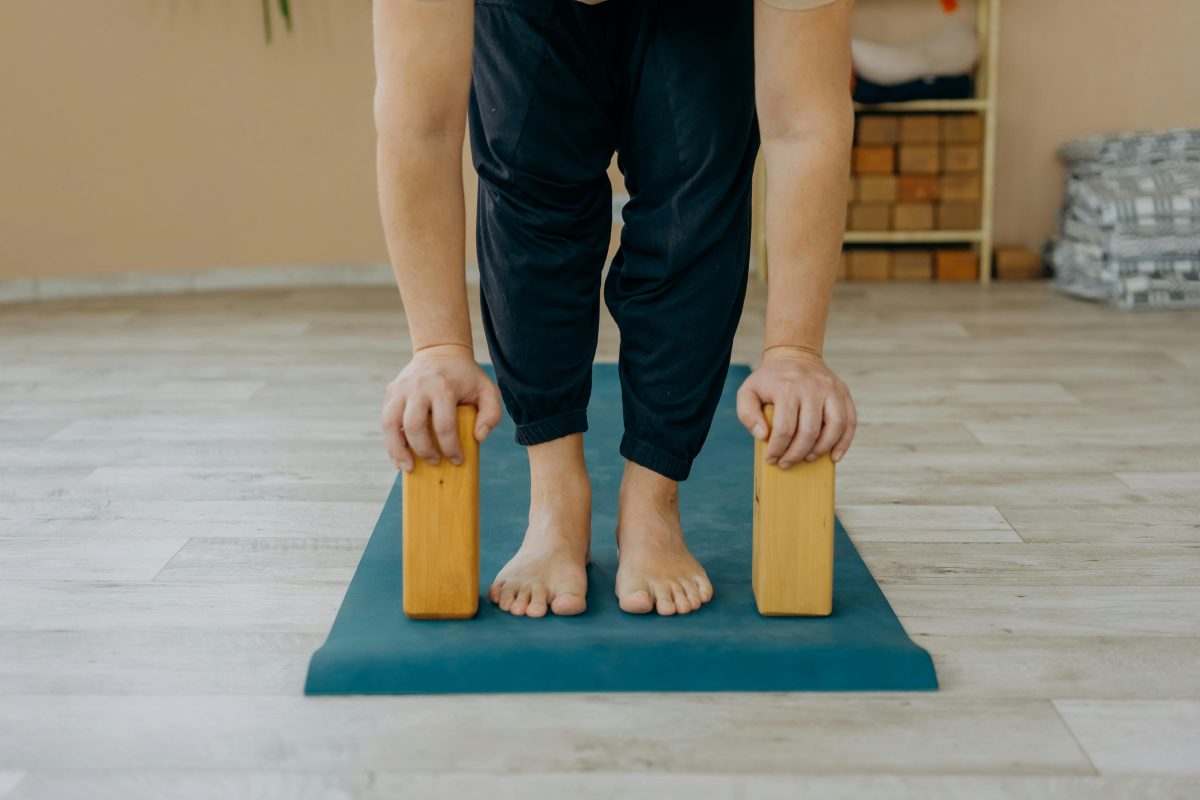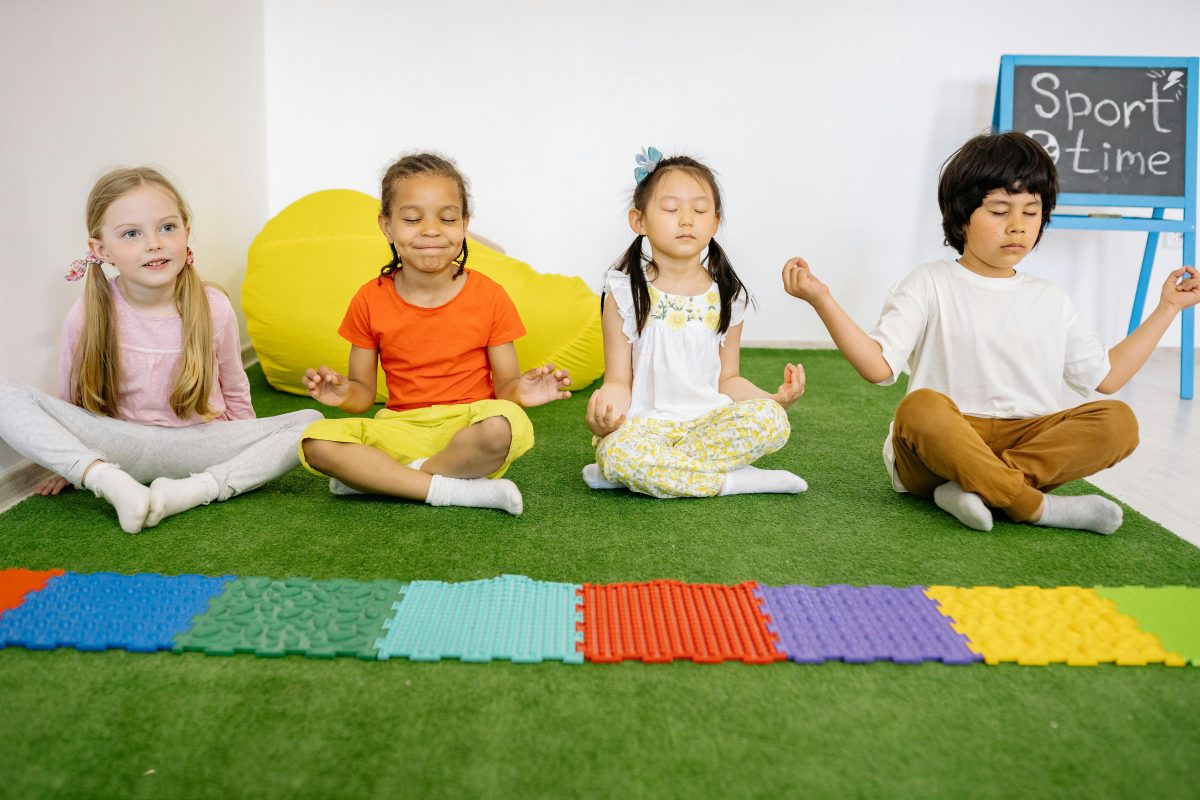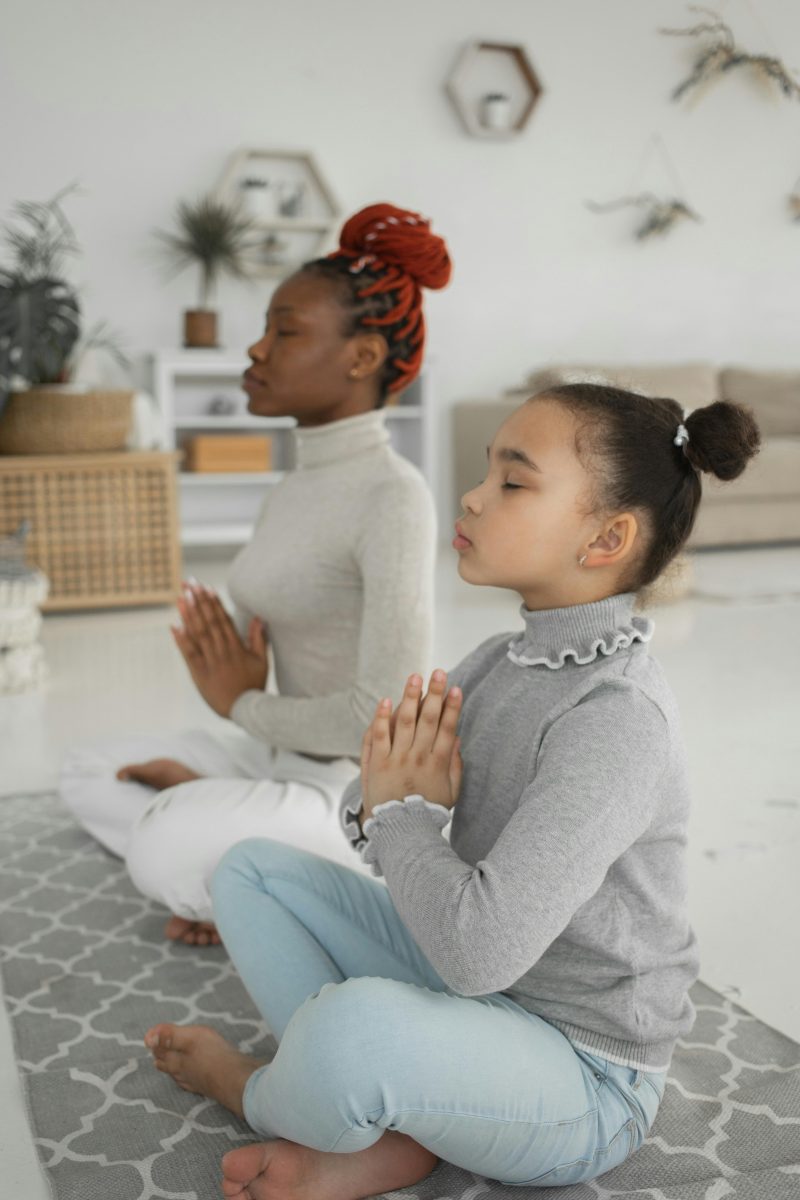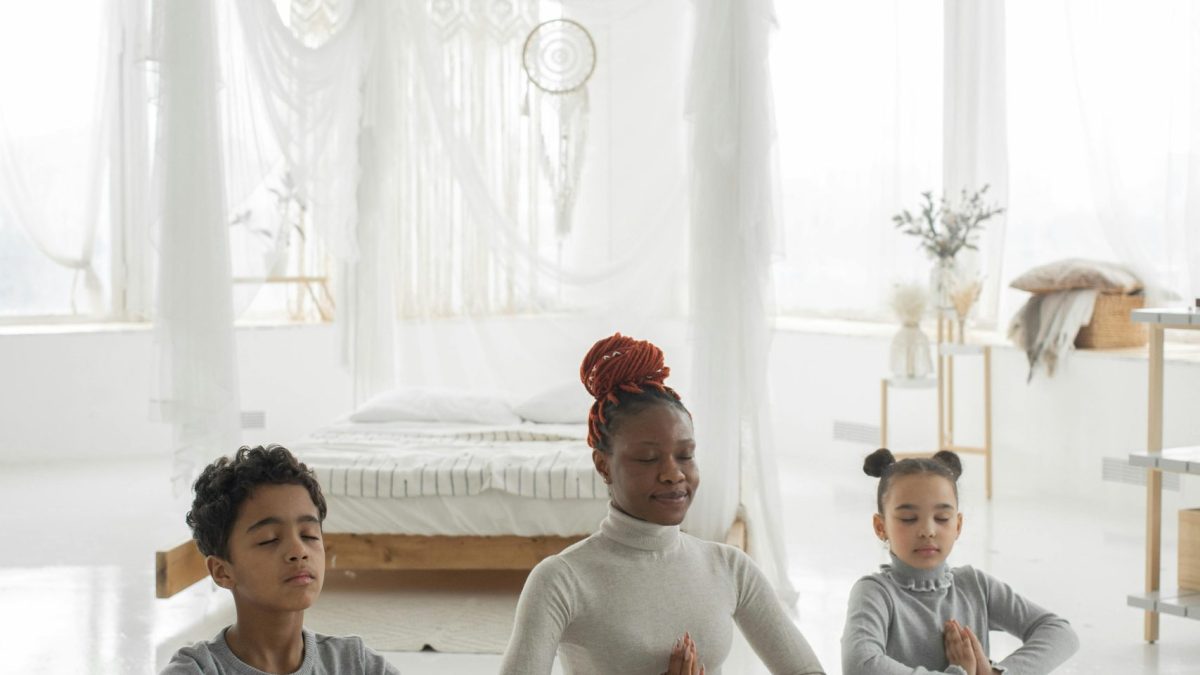An Overview of Children’s Yoga

With roots in ancient Indian customs, yoga has evolved over centuries to become a popular practice all over the world. Its transition from the past to the present is evidence of its adaptability and long-lasting advantages. Children’s interest in yoga has grown dramatically in recent years, a trend that is indicative of the yoga’s accessibility and universal appeal. This article will explore the many advantages of yoga for kids and explain how this ancient form of exercise can help kids’ mental, emotional, and physical growth.
The core of yoga is its all-encompassing approach to health, which combines physical postures with breathing exercises and meditation techniques in a distinctive way. For kids, this means having a chance to experiment with movement in a non-competitive setting, which helps them develop inner peace and self-awareness. Yoga’s depth and simplicity offer young minds a respite from the complexity of modern life, fostering empathy, resilience, and a harmonious relationship with the environment.
- Taking a child on a yoga journey can provide a multitude of advantages, such as improved flexibility and balance, as well as enhanced concentration and stress relief. This article will help you understand how yoga can be a life-changing tool for your child, supporting their development and well-being in a joyful and all-encompassing way.
Yoga Promotes Better Physical Health in Kids

Enhancing Balance and Flexibility
Among the gentle yet effective methods for improving children’s flexibility and balance is yoga. Kids learn to strengthen and stretch their bodies in a supportive and safe environment by experimenting with different poses. This helps them grow physically and improves their coordination and agility, which makes daily tasks simpler and more pleasurable.
Building Posture and Strengthening MusclesThe entire body is engaged and toned with regular yoga practice. Youngsters naturally develop stronger muscles, which supports their skeleton and helps with posture. This fundamental strength is especially important in the digital age we live in today, where bad posture from extended screen time is a common occurrence. Yoga provides a counterbalance by encouraging a more upright, healthful posture.
Encouragement of Healthful Exercise Practices at an Early Age
Early exposure to yoga fosters a love of movement and an understanding of mindfulness. It helps children steer clear of sedentary lifestyles and lays the foundation for a lifetime of healthy exercise habits. Children who incorporate yoga into their daily routine learn the importance of looking after their bodies and minds.
Impact on Physical Health Conditions and Obesity
In the battle against childhood obesity and associated health issues, yoga can be a potent ally. Yoga helps control weight and lowers the risk of diabetes, heart disease, and other obesity-related conditions by promoting physical activity in an enjoyable and approachable way. Additionally, it enhances children’s general sense of wellbeing and inspires them to lead healthier lifestyles.
A comprehensive strategy for improving children’s physical health is to incorporate yoga into their daily lives. It’s a way of life that nourishes their body, mind, and spirit—it goes beyond simple exercise. The lessons they learned on the yoga mat will come in handy as they mature and deal with life’s obstacles; they will lay the groundwork for a balanced, healthy future.
Yoga: A Way to Help Children’s Mental and Emotional Health

Strategies for Decreased Stress and Anxiety
Children can find a haven in yoga to help them deal with the stresses of growing up. They learn to relax their minds through basic breathing techniques and guided visualizations, which gives them a toolkit for stress and anxiety management. These exercises promote relaxation, which helps kids deal with problems with composure and clarity.
Practicing Mindfulness to Improve Concentration and Memory
Yoga’s central practice of mindfulness helps kids focus better and remember things better. Children learn to ground themselves in the present moment by paying attention to their breath and movements. This increased awareness facilitates concentration, which helps with everyday tasks and academic performance.
Developing Body Awareness and Self-Esteem
Positivity toward oneself and body awareness are fostered by yoga. Children’s self-esteem rises as they become proficient in new poses and become more confident in their skills. This body-mind connection teaches kids to value their bodies and abilities and fosters a healthy sense of self-awareness.
Yoga’s Contribution to the Development of Resilience and Patience
The practice of yoga requires patience and perseverance. Youngsters discover that improving their flexibility or holding a pose for a longer period of time requires patience. This knowledge fosters resilience and patience, two qualities that are essential for conquering obstacles in life.
Children who practice yoga benefit not only from improved physical health but also from the nurturing of their mental and emotional wellbeing. Yoga offers children the tools they need to handle life’s challenges with grace and poise by fostering resilience, self-esteem, and mindfulness through its stress-reduction techniques. These abilities and knowledge provide a strong basis for a well-rounded, healthy future as they develop.
Yoga’s Educational Advantages and Learning Enhancement for Kids

A Possible Link Between Yoga and Higher Academic Achievement
Yoga has a significant impact on academic achievement. Children become better at learning and remembering information when they have improved concentration and reduced stress. Studies reveal that students who regularly practice yoga perform better academically because they are better able to concentrate on their studies and handle the pressure of exams.
The Benefits of Yoga for Boosting Creativity and Problem-Solving Ability
Yoga not only stretches the body but also the mind. Children can enhance their problem-solving abilities and unleash their creative potential by practicing mindful breathing and meditation. They are able to approach academic challenges with creative solutions and a new perspective thanks to their mental flexibility.
Using Yoga in Classrooms to Promote Holistic Development
Including yoga in the curriculum provides an all-encompassing approach to learning. It attends to students’ physical, mental, and emotional needs while promoting an atmosphere in which academic success is not as important as holistic development. Schools that have implemented yoga report that students’ behavior and general well-being have significantly improved in addition to their academic achievement.
Research Results and Case Studies Concerning Yoga in Schools
International case studies demonstrate the beneficial effects of yoga in learning environments. For example, a study carried out in a primary school in Australia found that pupils who regularly practiced yoga improved significantly in terms of their focus, behavior, and ability to manage stress. According to research, students who practice yoga report feeling less anxious and performing better academically.
By incorporating yoga into children’s lives, we give them the skills they need to deal with the challenges of the contemporary world. Beyond the classroom, yoga has a profoundly positive impact on education by encouraging creativity, problem-solving abilities, and a lifelong love of learning. Children who learn yoga also learn how to face life’s obstacles with grace, resiliency, and an open heart.
Useful Advice for Including Yoga in Kids’ Lives

Selecting the Appropriate Style of Yoga for Various Age Groups
- For young children, concentrate on story-based, playful yoga that sparks their curiosity.
- More structured sessions that introduce basic poses and breathing techniques are beneficial for school-aged children.
- The introduction of meditation as a stress-relieving technique and the challenge of more difficult poses may appeal to teenagers.
Establishing a Secure and Welcome Environment for Practice
- A welcoming environment promotes consistent practice. Set aside a peaceful, cozy area of your house for yoga.
- Make sure there are no dangers and ample space for mobility. A familiar classroom in a school can be made into a peaceful area by adding mats, dim lighting, and few other distractions.
A Guide to Helping Teachers and Parents Lead Yoga Classes
- Shorten the sessions at first, and as the kids’ concentration increases, lengthen them gradually.
- To add some fun to the practice, use themes or compelling storytelling.
- Adapt the session to the children’s energy levels and interests on any given day by exercising patience and flexibility.
- Encouraging them and recognizing their accomplishments is essential.
Suggested Resources: Kids’ Yoga Books, Videos, and Apps
- Seek out books with clear instructions and vibrant illustrations.
- With so many free online resources geared toward varying age groups, videos can be a great way to engage kids.
- Children’s yoga apps provide interactive experiences that make the practice enjoyable and instructive. “Yoga Kids” and “Cosmic Kids Yoga.” are a couple of the well-liked options.
Including yoga in children’s lives has a profoundly positive developmental impact. Yoga can be incorporated into children’s daily routines in a fun and meaningful way by parents and educators by selecting the appropriate style, setting up a supportive environment, and using engaging resources. Beyond just improving physical health, yoga also helps children’s mental and emotional health and builds the groundwork for a balanced, mindful life.
In Conclusion
Children’s holistic growth is fostered by yoga. It blends physical health with mental and emotional well-being, instilling resilience and joy. Children who practice yoga are better prepared to face life’s obstacles with grace and confidence thanks to the dynamic poses, focused breathing techniques, and imaginative imagery. It builds the groundwork for long-term health, scholastic achievement, and personal fulfillment. Let’s include yoga as an essential part of kids’ daily routines so they can live balanced, healthful lives.
The Benefits of Yoga for Children FAQs
Yes, children can start practicing yoga at any age, with appropriate modifications and supervision. For younger children, yoga often focuses on simple poses, games, and songs that encourage movement and mindfulness. As they grow, the practice can be adapted to challenge their developing bodies and minds, fostering a lifelong habit of health and self-awareness.
Yoga can enhance creativity in children by opening their minds and encouraging them to express themselves in unique ways. The practice stimulates imagination through storytelling and visualization exercises embedded in yoga poses and sequences. This not only makes the practice enjoyable but also nurtures a child’s innate creativity and curiosity.
Yoga can be incredibly beneficial for children with special needs, offering a non-competitive and adaptable activity that can be tailored to their individual capabilities. It promotes inclusivity, improves motor skills, and enhances self-esteem, providing a sense of achievement. Furthermore, the calming effects of yoga can help regulate emotions and improve concentration in children with a wide range of special needs.
Yes, yoga can significantly improve a child’s concentration and focus. Through breathing exercises and mindfulness practices, children learn to center their attention and reduce distractions. This improved focus can translate to better academic performance and enhanced learning capabilities.
Practicing yoga can help improve children’s sleep patterns by promoting relaxation and reducing stress and anxiety. The calming effect of yoga, especially through practices like gentle poses and breathing exercises before bedtime, can make it easier for children to fall asleep and enjoy a more restful night. This is particularly beneficial in today’s fast-paced world, where many children struggle with sleep issues.
Yoga supports a child’s emotional development by teaching them how to recognize and manage their feelings through mindfulness and breathing exercises. It provides tools for coping with stress, anxiety, and frustration in a healthy way. Additionally, yoga can boost self-esteem and body image by fostering a sense of personal accomplishment and self-acceptance.
Yoga benefits a child’s physical health by improving flexibility, strength, and coordination. Regular practice helps in developing core strength, enhancing balance, and promoting better posture, which is especially important in the digital age where children spend a lot of time in front of screens. Additionally, yoga can be a gentle yet effective way to encourage physical activity, even for those not inclined towards competitive sports.
Yoga promotes social skills in children by encouraging group activities that foster interaction, cooperation, and respect for others. Through partner poses and group classes, children learn the importance of teamwork, communication, and empathy. This communal aspect of yoga helps children understand the value of community and building healthy relationships.
Yoga can be particularly beneficial for children with ADHD by helping them increase their self-awareness and control over their impulses. The practice encourages a state of calm and focus, which can mitigate symptoms of hyperactivity and impulsiveness. Moreover, the structured yet flexible nature of yoga provides a safe space for children with ADHD to express themselves physically in a controlled environment.
Yoga plays a significant role in stress management for children by teaching them techniques to calm their minds and relax their bodies. Through mindfulness and breathing exercises, children learn practical ways to cope with stress, leading to a more balanced and peaceful state of being. This early introduction to stress management can equip children with valuable coping mechanisms that benefit them throughout their lives.

